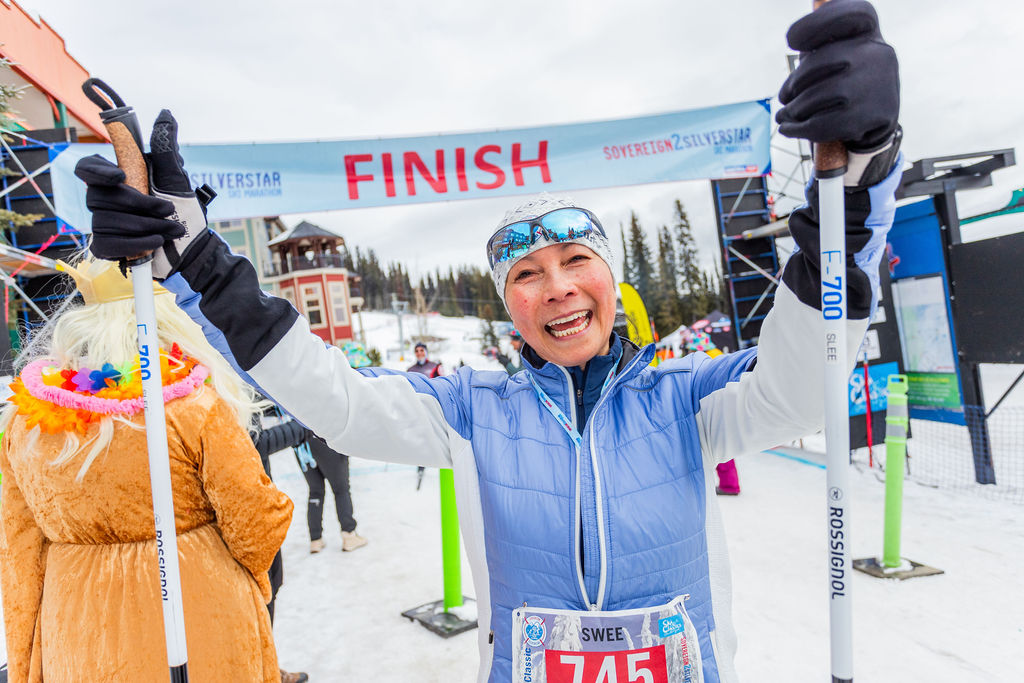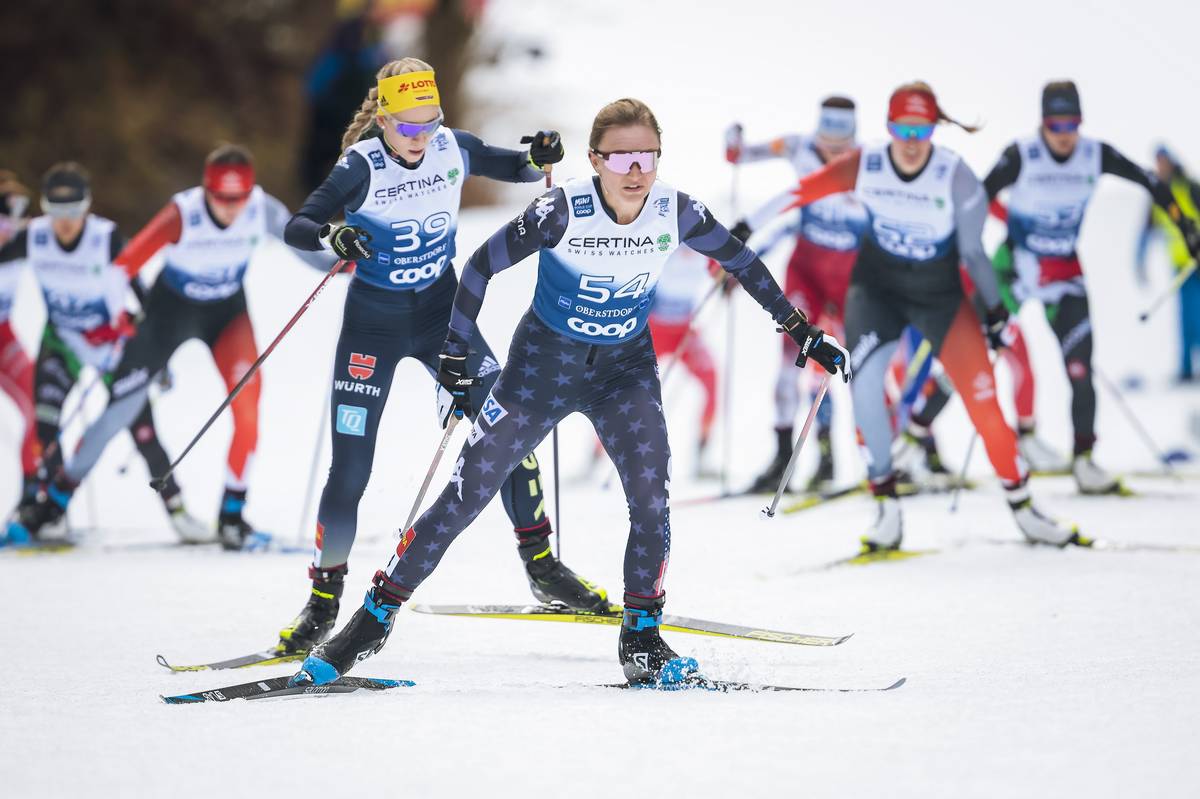
When he first started coaching juniors in Crested Butte, Colo., Jason Cork didn’t exactly expect the profession to eventually take him to the U.S. Ski Team. Though his recent appointment as its men’s coach now makes the evolution from junior, to college, to elite, to national team seem like a natural progression up the domestic coaching ranks, at each step of the way he has only ever been concerned with being a good coach for the team he is with, be it at Crested Butte, Durango, Michigan Tech or the Central Cross Country (CXC) elite team.
In his most recent post at CXC, Cork oversaw Jessie Diggins’ training plan during a World Cup season in which she skied unlike any American athlete of her age has ever had. He credits the luck of getting to coach talented skiers with making him “look pretty OK,” but as his athletes have attested to, a lot of hard work goes into producing that kind of success. The USST clearly took notice, and after his inaugural stint working on the World Cup with the national team staff this February, Cork put himself even more prominently on their radar.
In the month since being brought on to replace Pete Vordenberg, Cork has been to the Bend, Ore., training camp and observed the first round of off-season fitness tests at the Center of Excellence in Park City, Utah. He packed up and moved to the USST’s home base at the start of June to begin working with the men’s team on a daily basis. He will also continue to oversee training for Diggins, who recently joined the Stratton Mountain School elite team, because as Cork said in May, “We might as well keep doing what we’re doing.”
On top of the usual new-job adjustments (new email, new office, new USSA head shot), Cork has also started the process of (re)familiarizing himself with a different set of athletes — their training, goals and ways of operating.
He spoke with FasterSkier last week about that transition, the difference between coaching Simi Hamilton and a J2, and jumping in with a World Cup service crew for the first time. Below is an edited and condensed version of the interview.
FasterSkier: How have you been settling in to Park City?
Jason Cork: The last couple of days I’ve been doing some workouts. We take a little video; I watch it and got a better grasp of what the athletes are working on, what they need help with.
[Before moving] I was here for the USSA Congress so I got to watch a fair amount of testing before I went back to the Midwest. I went to Bend with the team, got on snow and watched them training. It was really good; the snow was better than expected.
FS: Have you always known you wanted to coach at the national team level?
JC: It’s definitely been a goal from high school to coach at some level. I started coaching in Colorado when I was 25 or 26.
Initially I got into it because I was like, ‘Well, I’m just painting houses and that seems ridiculous. I’ve spent years working with coaches and reading about skiing, learning about technique and training, and it seems stupid to throw all that away. I can be a pretty busy house painter but that’s not my goal. I’d spent too much time skiing.’
And definitely, it’s worked out really well. I’ve been lucky to work with other really good coaches and good athletes who’ve had success, so it makes me look pretty OK. I don’t know if I would have guessed that it ended here, but it seems to have so that’s good.
FS: In starting to coach a new set of athletes, how do you go about getting to know them?
JC: Well it’s kind of nice — obviously I’ve worked with Jessie, and I’ve coached Tad [Elliott] as a junior, and Simi [Hamilton] and Noah [Hoffman] are from Colorado and they were juniors when I was coaching there. So…I have a little bit of a relationship with a lot of the team.
And then Skyler [Davis] and Andy [Newell] are working with Gus [Kaeding] at Stratton, so I have a good relationship there and can keep in touch with what they’re working on. If Gus wants to be working on something specific with them it’s easy to get that from him, communicate with those guys, and then communicate back to Gus how that worked out.
Right now Simi, Tad and Liz [Stephen] will be in Park City for pretty much the whole summer outside of short trips, and people come in and out. So I’ll work on coordinating workouts between all the athletes.
I’m writing plans for Tad, Simi and Jessie, so in that respect it’s really similar to CXC. But the rest of the athletes have their own coaches, and Matt and Chris write plans for other athletes. Mostly it’s more keeping track of where they’re at and what they need. And if they’re not here for big chunks of time, it’s about keeping in touch with them and their coaches.
FS: Is there a difference in the way you coached juniors and they way you coach the best in the country?
JC: It’s funny; in talking with [USST development coach] Bryan Fish and setting up presentations for some of the REGs, I think a lot of the stuff is at least 95% common to a first year J2 and someone on the World Cup. Every day you’re setting small goals and hoping to hit them. You have big goals down the line. You have basic technique things. It doesn’t matter who you are, you need to have good body position.
There are always little tweaks. If you’re working with someone who only started skiing a year ago there’s major tweaks, but as you get more experience they still exist. They might not be as big a thing as: you need to figure out your timing ‘cause it’s completely backwards, but maybe you need to figure out your timing because you’re 98% of the way there. It’s definitely more fine-tuning at this level but there’s still fitness changes, strength changes, that stuff.
FS: In brief, what do you think makes a good coach?
JC: I think it’s different with different age groups. With juniors you can have good success mostly just by having a lot of opportunities to train and at least some technical background. In college athletes are more mature and it’s about trying to work with them through the change of being in high school and living with your parents to being in college and having to figure out a lot of stuff.
Then with the elites it’s kind of a mix. You have to be able to communicate mostly, and figure out what an athlete needs to do to be successful. ‘OK, you want to be fast, what do we have to do to make you fast.’ Some people respond to different training, so some of it’s trial and error, a lot of it’s looking at how they’ve responded historically, and somewhere in the middle you figure out what to do.
FS: What are you excited for in working with the USST athletes?
JC: It’s exciting to work with such good athletes. Obviously they’re really fit, but when you go out and do something with them you’re like, ‘Oh, these guys are really fit.’
I’ve had a lot of athletes the last couple years who’ve had success and are really dedicated to the sport, but it’s cool to work with guys who are doing it on the World Cup level.
I’m excited to go to World Cups and go to those races. I think it’s cool to see the best skiers in the world, and hopefully our skiers are the best in the world too.
FS: You went to the World Cup for the first time this February. Do you feel added pressure on race day when you’re over there?
JC: Yes and no. On one hand it’s added pressure because it’s the World Cup. You can’t really approach it the same way you do a Tuesday afternoon time trial.
But it’s nice because you have so much more staff. For the past two years (at CXC) it’s been two to three techs working for six to 20 athletes, so you’re definitely a lot busier. But on the World Cup working with the USST, generally it’s one tech or one coach to one person. So in that respect it’s really nice.
When I went over this last February, I worked with Tad and Jessie. You go out and help them test skis, get their feedback and make adjustments. It’s definitely a higher level, so you have to be spot on. You can’t miss it by 5%. You might be able to get away with that on the SuperTour; not so much on the World Cup. But it’s also a little easier because you’re not having to adjust 15 pairs of skis; you’re looking to adjust one or maybe two pairs.
In the end you have a bunch of skis with a bunch of wax, and you go out and pick the best one. It’s not like you go over to the World Cup and they hand you a whole new box of wax. It’s the same thing: you test base, you test fluoro powder, you test top coat and you test structure. You try to make the best out of what you got and hopefully it’s really good.
FS: Thanks Jason.
JC: All right, I’m gonna go lift weights with Tad.
Audrey Mangan
Audrey Mangan (@audreymangan) is an Associate Editor at FasterSkier and lives in Colorado. She learned to love skiing at home in Western New York.



